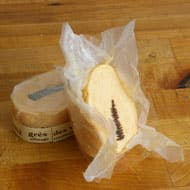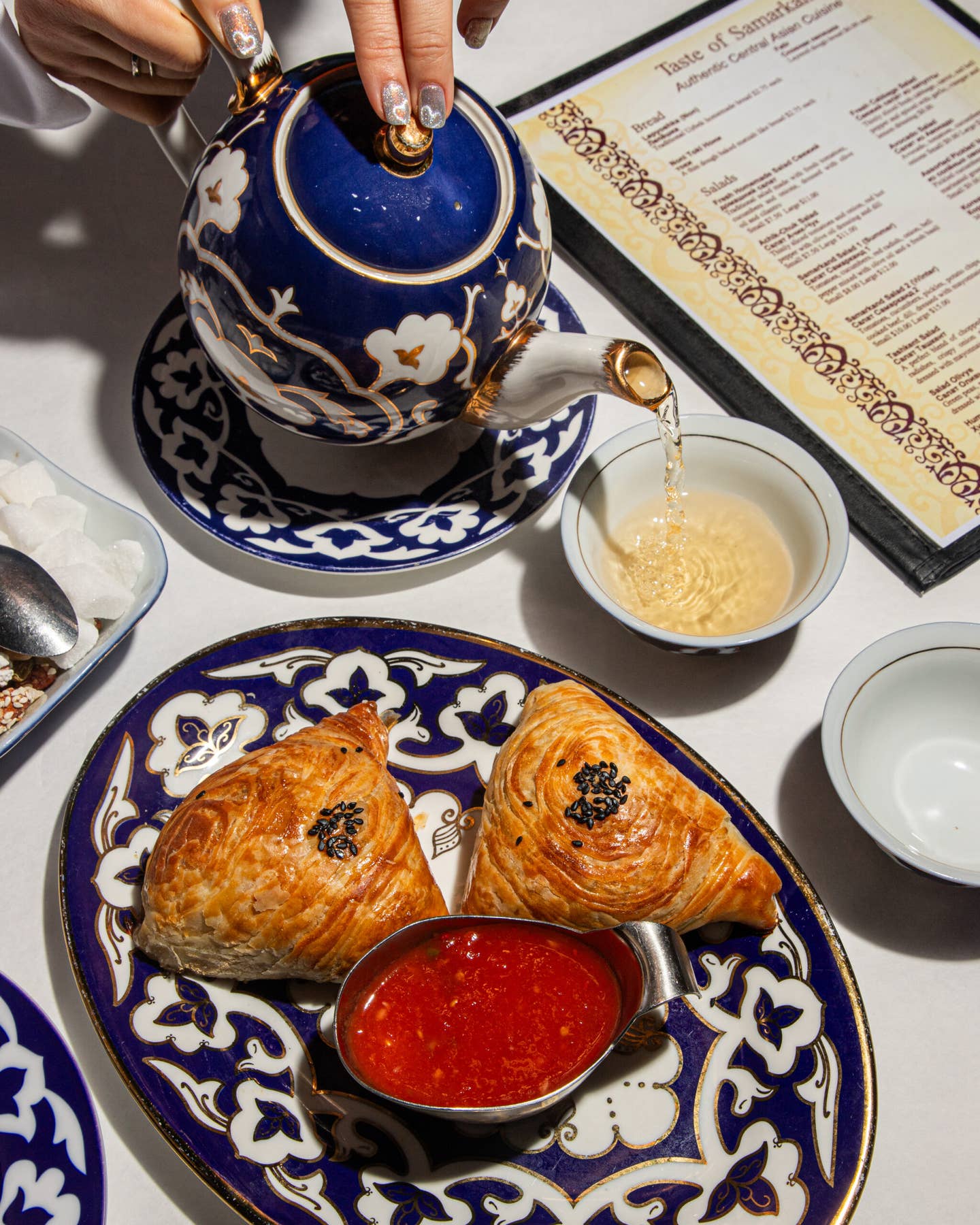
Cheese Quest
I've always loved Munster cheese, and since revisiting Alsace last summer to report a story about choucroute garnie, I've been craving it. If, like me, you grew up on the American deli variety, with its brazenly artificial orange rind and its texture like soft silicone, discovering Alsatian Munster is like finally tasting fresh-squeezed orange juice after a lifetime of Tang. A good, ripe one will have a pungent, briny exterior and an oozy interior that's sweet as fresh milk and heady as a barnyard all at once. The pale-apricot-colored rind will have been washed repeatedly in salt water throughout the aging process to inhibit the growth of unwanted molds and encourage the proliferation of the helpful bacteria that give the cheese its supercharged flavor. Some say it's the high protein content of the milk produced by the Vosgienne cows raised in the region that makes Alsatian Munster so much better than the cheeses called Muenster in Germany and the U.S.; others insist they detect the distinctive flowers and wild grasses of Vosges Mountain pastures in the cheese's sweet, grassy notes. In Alsace, at restaurants like Auberge de l'Ill, near Colmar, a nice, ripe hunk of Munster will often come to the table along with a little bowl of toasted caraway seeds and a glass of racy Alsatian gewurztraminer. The combination of the bittersweet caraway, the wild honeysuckle perfume of the gewurztraminer, and the luscious, odiferous Munster seems perfectly calibrated to take you right to the brink of sensory overload, a pretty exciting place to be. I've been trying to get back there for months.
Problem is, I haven't been able to get my hands on a good Alsatian Munster in the States. The ones sold here—the ones sold legally, anyway—must be made from pasteurized milk. I don't know if that's what makes them so bitter and rubbery, or if they haven't ripened properly, or if they're just too delicate to survive the journey with their gorgeousness intact. Anyway, I've tracked down a few locally available substitutes that come about as close as it seems possible to get outside of Alsace. For example, Cowgirl Creamery's Red Hawk, a washed-rind, triple-creme cows' milk cheese made in California, will do very nicely in a pinch. Think of it as Munster's beefy, extroverted American cousin. I'm also enjoying Gres des Vosges (pictured at right), a mouthwatering, very Munster-like Alsatian cheese that seems to be pretty widely available on this side of the Atlantic; when you're scanning the cheese case, look for the tiny ferns embedded in the rind. Why Gres des Vosges is able to make the transatlantic journey more successfully than Munster, I don't know, but I'm grateful. And then there's Edwin's Munster, a relative newcomer from upstart Austrian cheese maker Edwin Berchtold. This cheese has serious funk, George Clinton-Detroit-circa 1974 funk. It's more like Alsatian Munster than it is like the milder Muenster that typically comes out of Germany.
And yet, you know, I've still got a place in my heart, or at least in my kitchen, for the stretchy stuff with the traffic-cone-orange exterior that you can buy in any American supermarket. Alsatian Munster it's not—not even close—but it makes an incomparably stringy and salty grilled cheese sandwich, and sometimes that's exactly what you want. Occasionally I'll even layer a number of thin slices of deli Muenster in a macaroni and cheese made with more flavorful cheeses, to up the gooeyness factor of the finished casserole. Besides, though I pine for it, I'm kind of okay with the fact that in order to recapture that authentic Munster experience, you have to go back to the source. It's as good a reason as any to visit Alsace.
Keep Reading
Continue to Next Story










